
|
|
|
|
It is mentioned in the Book of Revelation that the names of the twelve apostles are engraved on the twelve foundations of the heavenly Jerusalem. At the end of the rafters at St. Patrick's there is a symbol of each of the twelve apostles, the pillars of the Church. The symbols are taken from their experiences mentioned in Scripture and from Tradition.
"The wall of the city had twelve courses of stones as its foundation, on which is inscribed the twelve names of the twelve apostles." Rev 21:14
John has a vision of heaven, the new Jerusalem. supporting the new city are the faithful apostles, Peter...
At the base of the roof supports are the symbols of the faithful apostles. Judas Iscariot has been replaced by Matthias.
|
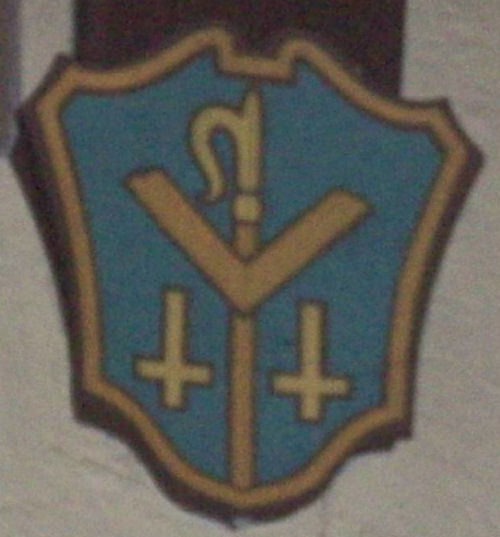
|
Sometimes called Thaddeus, Jude has as his symbol a carpenter's square and a boat hook.
Simon is said to have travelled with him. Very little is known of his life. Legend has it that Simon and Jude were crucified together as evidenced by the crosses in his shield.
|
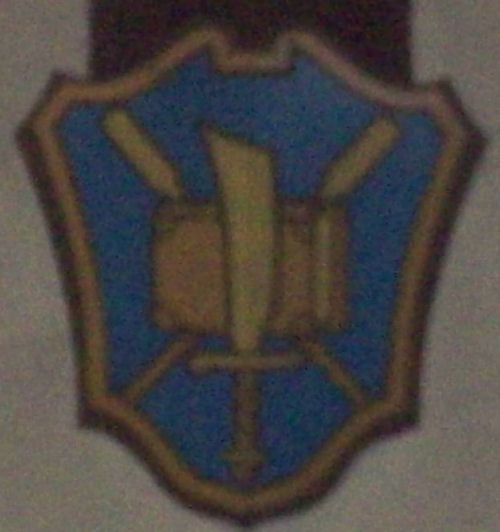
|
Matthias was the Apostle chosen by lot to take Judas' place as one of the twelve. Tradition holds that he worked in Judea or Ethiopia. He is said to have been stoned and then beheaded.
The oars and book could signify his role as a missionary and role as a preacher.
|
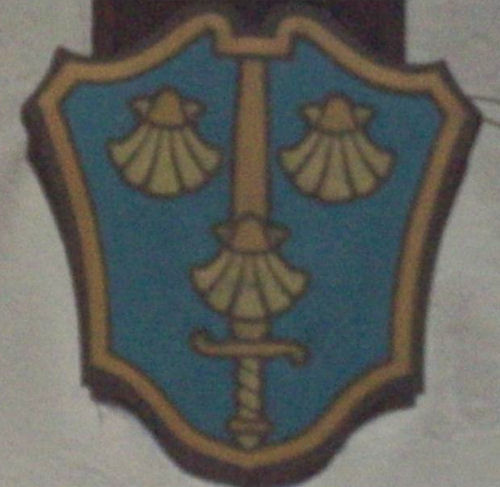
|
James was the brother of John and a son of Zebedee. He traditionally preached in Spain after working in Jerusalem. James was beheaded by Herod Agrippa. He is the only apostle whose death is recorded in scripture (Acts 12:2). His shield shows a scallop (or cockle) shell, a symbol of pilgrimage by sea, and the sword of martyrdom
|
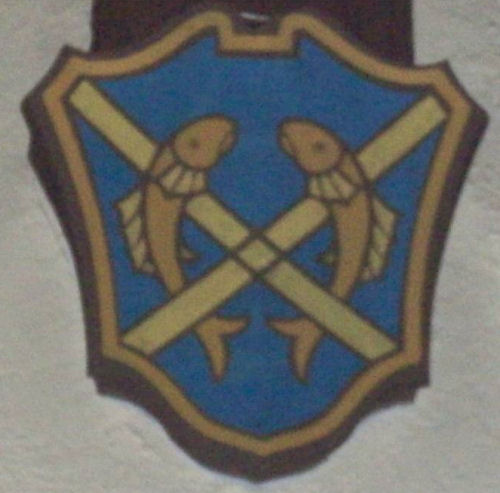
|
The transverse cross was the type of cross on which he was crucified. The two fish indicate his career as a fisherman
|
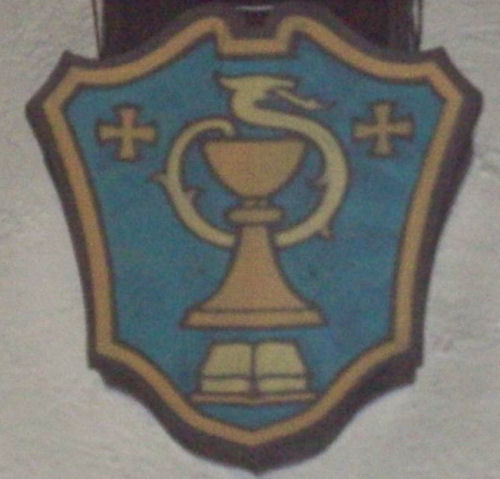
|
Legend has it that an attempt was made on St. John's life by poising the wine in the chalice, hence the serpent surrounding the chalice.
|
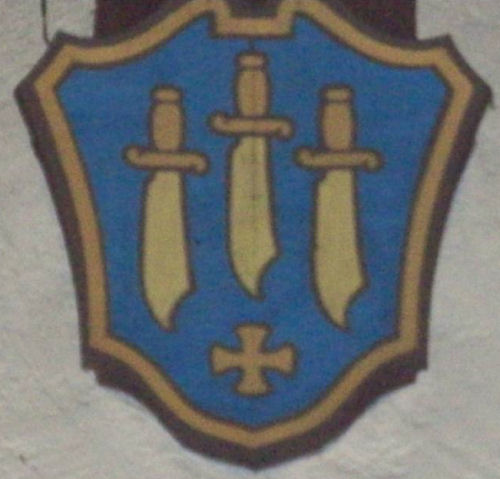
|
After the Ascension he travelled to India, Armenia, and Cilicia. He suffered a horrible death in Albanopolis, being first flayed alive with knives then crucified.
|
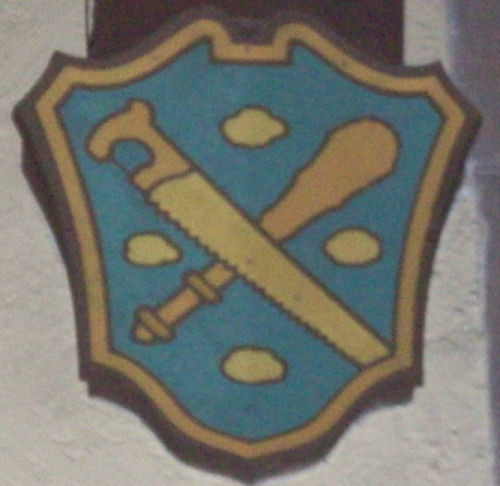
|
James (called "The Less" or "The Just") was a son of Alphaeus. He worked in and near Jerusalem and was probably its first bishop. An ancient historian claims that James was pushed from a pinnacle of the temple at the age of 96. Near death, he rose to ask forgiveness for his enemies, who then beat him with a fuller's bat and sawed his body in pieces.
|
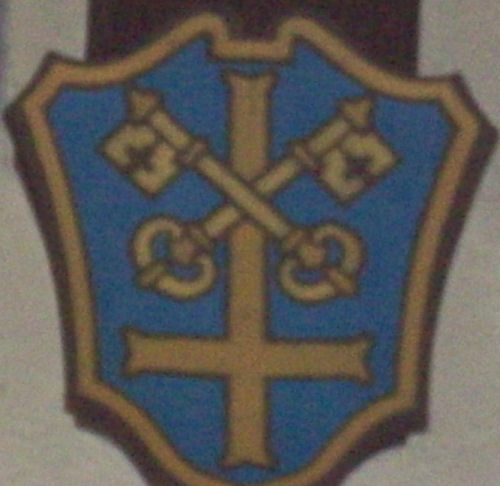
|
The inverted cross signifies his crucifixion upside down.
"Thou art Peter and upon this rock I will build my Church, and the gates of Hell shall not prevail against it, and I will give to you the keys of the kingdom of heaven. And whatever you bind on earth shall be bound in heaven; and whatever you loose on earth shall be loosed in heaven." MT 16:18-19
|
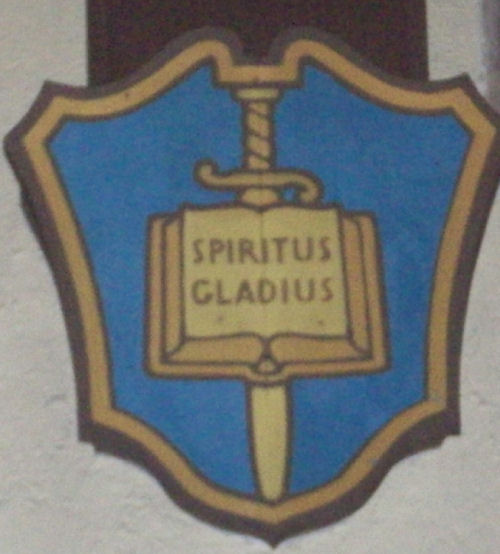
|
While not one of the original twelve apostles, Paul calls himself an apostles. Paul's shield shows an open Bible on which the words Spiritus Gladius are written. St Paul himself interprets this symbol for us in his words to the Ephesians (6:17): “Take the helmet of salvation, and the sword of the Spirit, which is the Word of God.” The Epistle to the Hebrews (4:12) says, “The Word of God is living and active, sharper than any two-edged sword, piercing to the division of soul and spirit, of joints and marrow, and discerning the thoughts and intention of the heart.”
|
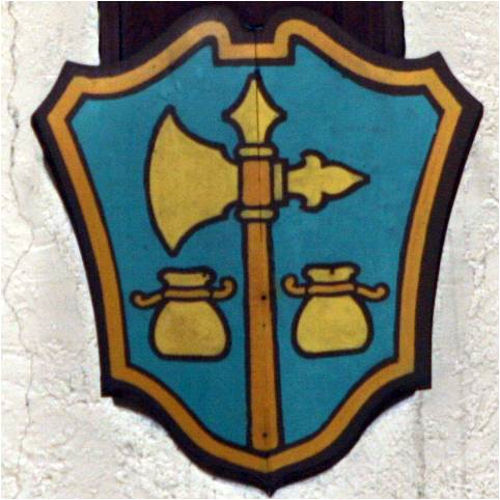
|
Matthew was a son of Alphaeus and a tax collector. He was also known as Levi. According to tradition, he went to Ethiopia after preaching to the Jews in Palestine. Traditional accounts of Matthew's death vary. Some say he died a natural death. Others say that he was crucified in Ethiopia and was then beheaded.
The moneybags refer to the occupation of St. Matthew before he was called to follow Christ. He was a tax gatherer known as Levi.
|
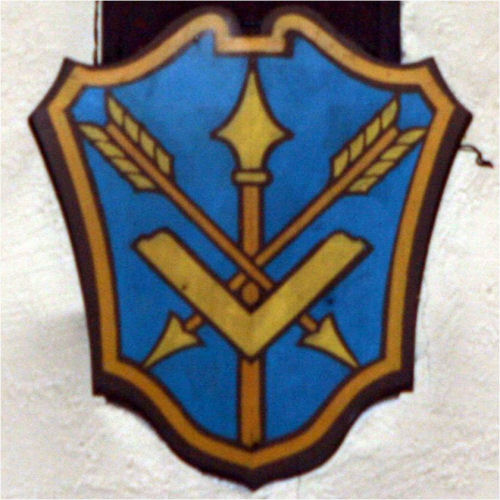
|
Thomas was an evangelist in Persia and India. In India he is reported to have built a church with his own hands. Thomas died when he was shot with arrows, stoned and left to die then someone ran a spear through him. The symbols represent his manner of death his skill at building.
|
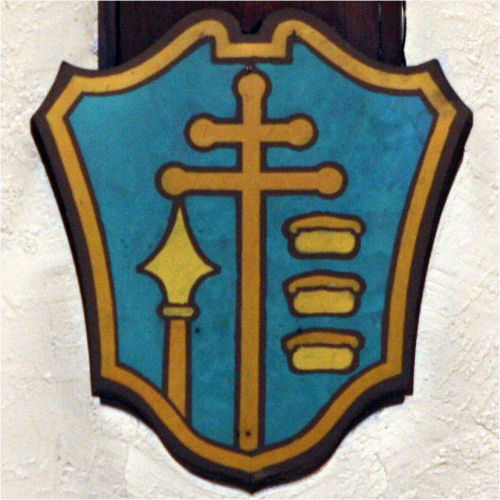
|
It was to St. Philip that Christ addressed his remark concerning the feeding of the multitude.(St. John 6, 7). The symbols on the right are of loaves of bead. Philip is said to have been martyred by crucifixion or the spear, or bound to a cross and stoned to death.
|

|